Sofa Sectionals - Ultimate Comfort and Style Guide
Sofa sectionals have revolutionized living room furniture by offering versatile seating solutions that combine comfort, style, and practical space utilization. These multi-piece furniture arrangements provide ample seating capacity while creating intimate conversation areas and maximizing corner spaces that traditional sofas often leave underutilized.
From compact L-shaped designs perfect for apartments to expansive U-shaped configurations ideal for large family rooms, sectional sofas adapt to various room sizes and lifestyles. This comprehensive guide explores the diverse world of sofa sectionals, helping you navigate configuration options, material choices, and design considerations to find the perfect sectional that enhances both your living space and daily comfort.
Our Top Sofa Sectional Recommendations
⚠️ AFFILIATE DISCLOSURE: This website contains affiliate links. As an Amazon Associate, we earn from qualifying purchases. If you make a purchase through these links, we may receive a small commission at no additional cost to you. Read our full affiliate policy.
Sectional Sofa Comparison & Recommendations
Which Sectional Configuration Meets Your Needs?
🏆 Best Overall: Modular Sectional
Flexible Modular Design
💰 Best Value: L-Shaped Sectional
Classic L-Shape Design
⭐ Premium Choice: U-Shaped Sectional
Luxury U-Shape Configuration
Sectional Configuration Comparison
- L-Shaped Sectionals: Ideal for corner placement, efficient space utilization
- U-Shaped Sectionals: Maximum seating capacity, perfect for large rooms
- Modular Sectionals: Ultimate flexibility, adaptable to changing needs
- Chaise Sectionals: Added lounging comfort, great for relaxation
- Apartment Sectionals: Compact designs optimized for smaller spaces
Sectional Sofa Advantages & Limitations
Understanding the benefits and potential limitations of sofa sectionals helps ensure you select the right configuration for your space and lifestyle:
✅ Sectional Sofa Advantages
Ample Seating: Provide more seating capacity than traditional sofas in comparable floor space.
Space Efficiency: Maximize corner utilization and create defined conversation areas.
Versatile Configurations: Adapt to various room layouts and functional requirements.
Family Friendly: Offer comfortable lounging and multiple seating options for family activities.
Style Statement: Create a focal point in living spaces with their substantial presence.
❌ Sectional Sofa Limitations
Space Requirements: Need adequate room dimensions for proper placement and traffic flow.
Limited Mobility: Difficult to move or rearrange compared to individual furniture pieces.
Configuration Constraints: Specific shapes may not work well in all room layouts.
Delivery Challenges: Large pieces may present difficulties navigating stairwells and doorways.
Higher Investment: Quality sectionals often represent significant furniture investments.
Practical Value Assessment
Sofa sectionals offer exceptional value for households seeking maximum seating comfort and space efficiency. While requiring careful space planning and representing meaningful investments, their versatility and capacity provide solutions that multiple individual furniture pieces cannot match in creating cohesive, comfortable living areas.
Tips for Choosing the Perfect Sectional Sofa
Selecting the ideal sectional requires careful consideration of your space, lifestyle, and comfort preferences. These guidelines will help you make an informed decision:
8 Essential Factors When Choosing a Sectional
1. Measure Your Space Precisely
Account for the sectional's dimensions, traffic flow, and clearance needed for comfortable movement. Use painter's tape to mark the footprint on your floor before purchasing.
2. Consider Room Layout and Traffic Patterns
Evaluate how people move through the space and ensure the sectional doesn't obstruct natural pathways. Consider door swings and access to other furniture.
3. Choose the Right Configuration
Select L-shaped for corner efficiency, U-shaped for maximum seating, or modular for flexibility. Consider how the configuration affects room flow and functionality.
4. Evaluate Material Durability
Choose fabrics that withstand your household's activity level. Performance fabrics, microfiber, and leather offer different benefits for durability and maintenance.
5. Assess Comfort and Support
Test cushion firmness, seat depth, and back support. Consider the sectional's primary use - lounging, entertaining, or daily family activities.
6. Consider Delivery and Access
Verify that the sectional can navigate your doorways, stairwells, and hallways. Modular sectionals often provide easier access to challenging spaces.
7. Plan for Future Needs
Consider how your needs might change. Modular sectionals offer adaptability, while fixed configurations provide stability but less flexibility.
8. Review Quality Construction
Look for sturdy hardwood frames, high-density foam cushions, and quality upholstery. Well-constructed sectionals provide better long-term comfort and durability.
Recommendations Based on Room Type
- Apartments: Compact L-shaped or apartment-sized sectionals
- Family Rooms: Durable U-shaped or modular sectionals with easy-clean fabrics
- Media Rooms: Sectionals with chaises or recliner features
- Open Concept: Sectionals that define spaces without blocking sightlines
- Multi-purpose: Sectionals with sleeper options or storage features
Frequently Asked Questions About Sofa Sectionals
What is the difference between a sofa sectional and a regular sofa?
Sofa sectionals consist of multiple connected pieces that form L-shaped, U-shaped, or modular configurations, providing more seating capacity and flexibility than traditional sofas. Regular sofas are single, continuous pieces with limited seating arrangements. Sectionals offer better space utilization in corners and larger rooms, while traditional sofas work well in smaller, rectangular spaces. Sectionals also create more intimate conversation areas and can be configured to suit specific room layouts.
How do I choose the right size sectional for my room?
Measure your room carefully, considering both the sectional's dimensions and adequate walking space. Allow at least 30-36 inches of clearance between furniture pieces for comfortable movement. Consider the room's traffic flow and focal points like windows or fireplaces. Use painter's tape to mark the sectional's footprint on your floor before purchasing to visualize the space utilization. Also consider the ceiling height and window placements to ensure the sectional complements rather than overwhelms the space.
What are the advantages of modular sectionals?
Modular sectionals offer exceptional flexibility, allowing you to rearrange components to suit different room layouts or occasions. They can be configured as separate pieces or combined into various shapes. This adaptability makes them ideal for frequently changing spaces or households that entertain often. Modular designs also facilitate easier moving through narrow doorways and staircases. Additionally, individual pieces can be replaced if damaged, extending the furniture's lifespan and maintaining its appearance over time.
Are sectionals suitable for small living rooms?
Yes, certain sectional designs work well in small spaces. Apartment-sized sectionals, loveseat with chaise combinations, or compact L-shaped models can maximize seating in limited areas. Look for sectionals with slim arms, low profiles, and space-saving dimensions. Avoid U-shaped configurations in small rooms as they can make the space feel cramped. Sectionals with exposed legs create visual lightness, and lighter colored upholstery can help small spaces feel more open and airy.
What is the best sectional configuration for family rooms?
For family rooms, L-shaped sectionals with chaises or U-shaped configurations work well as they provide ample seating and create a cozy, conversational arrangement. Consider sectionals with durable, easy-to-clean fabrics and include features like recliners or sleeper options for maximum functionality. Modular sectionals also work excellently in family spaces due to their adaptability. Look for stain-resistant fabrics and consider sectionals with storage compartments for remotes, blankets, or toys to maintain organization in busy family spaces.
Conclusion
Sofa sectionals represent versatile furniture solutions that successfully balance style, comfort, and practical space utilization. Their ability to provide ample seating while creating defined living areas makes them ideal for modern households seeking both functionality and aesthetic appeal in their living spaces.
From space-efficient L-shaped designs to flexible modular configurations, sectional sofas adapt to various room sizes and lifestyle needs. When selected carefully with attention to quality construction, appropriate sizing, and suitable configurations, sectionals become long-term investments that enhance daily comfort and social interactions within the home.
Ready to Choose Your Sectional Sofa?
Explore the selection of sofa sectionals above and discover the ideal configuration for your living space. Each product has been evaluated to help you find comfortable, stylish seating that maximizes your room's potential while meeting your specific needs and preferences.
Related Articles You Might Like
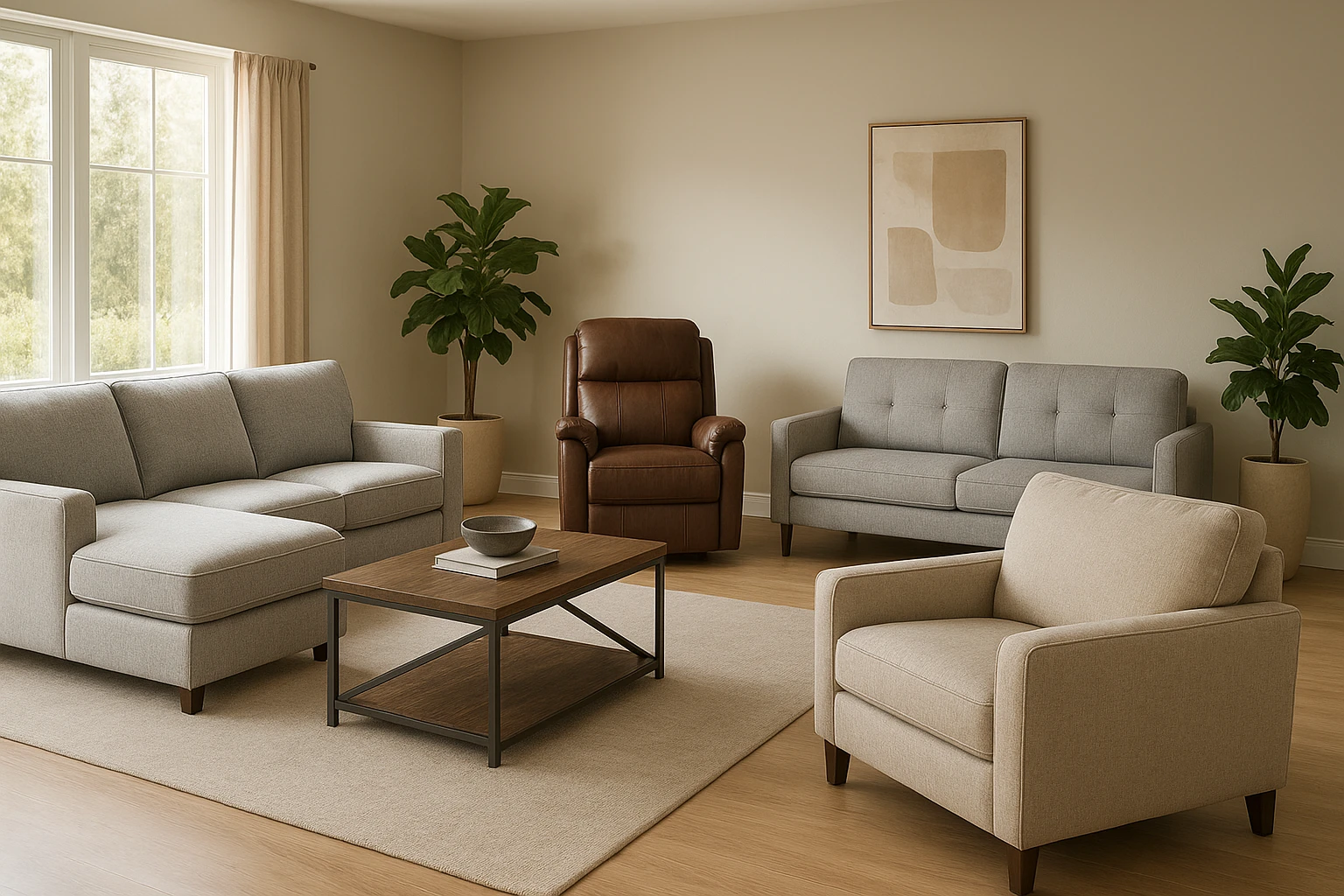
Explore various sofa styles and learn which designs work best for different spaces, needs, and interior design preferences.
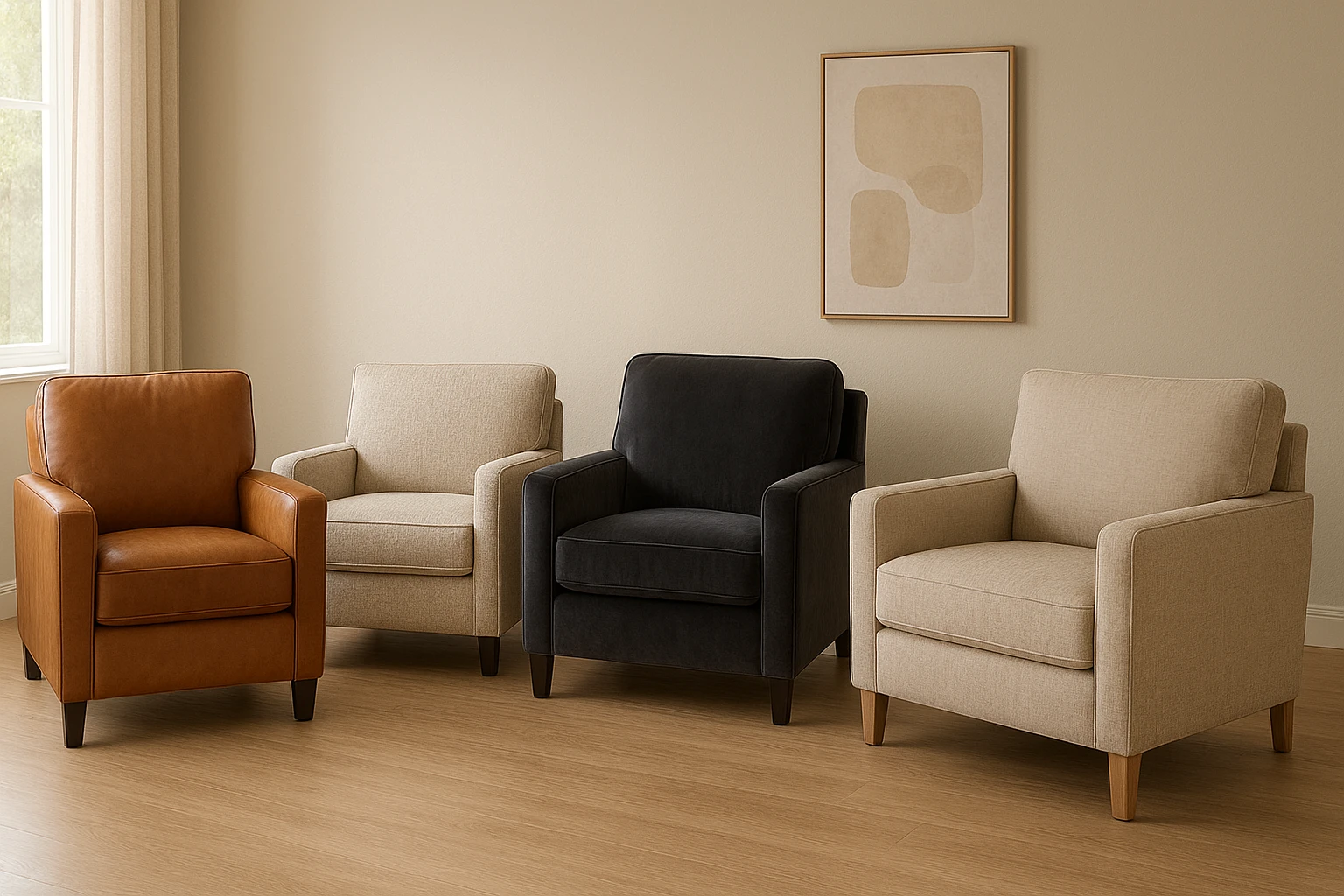
Detailed analysis of sofa upholstery options to help you choose the right material for your lifestyle and maintenance preferences.
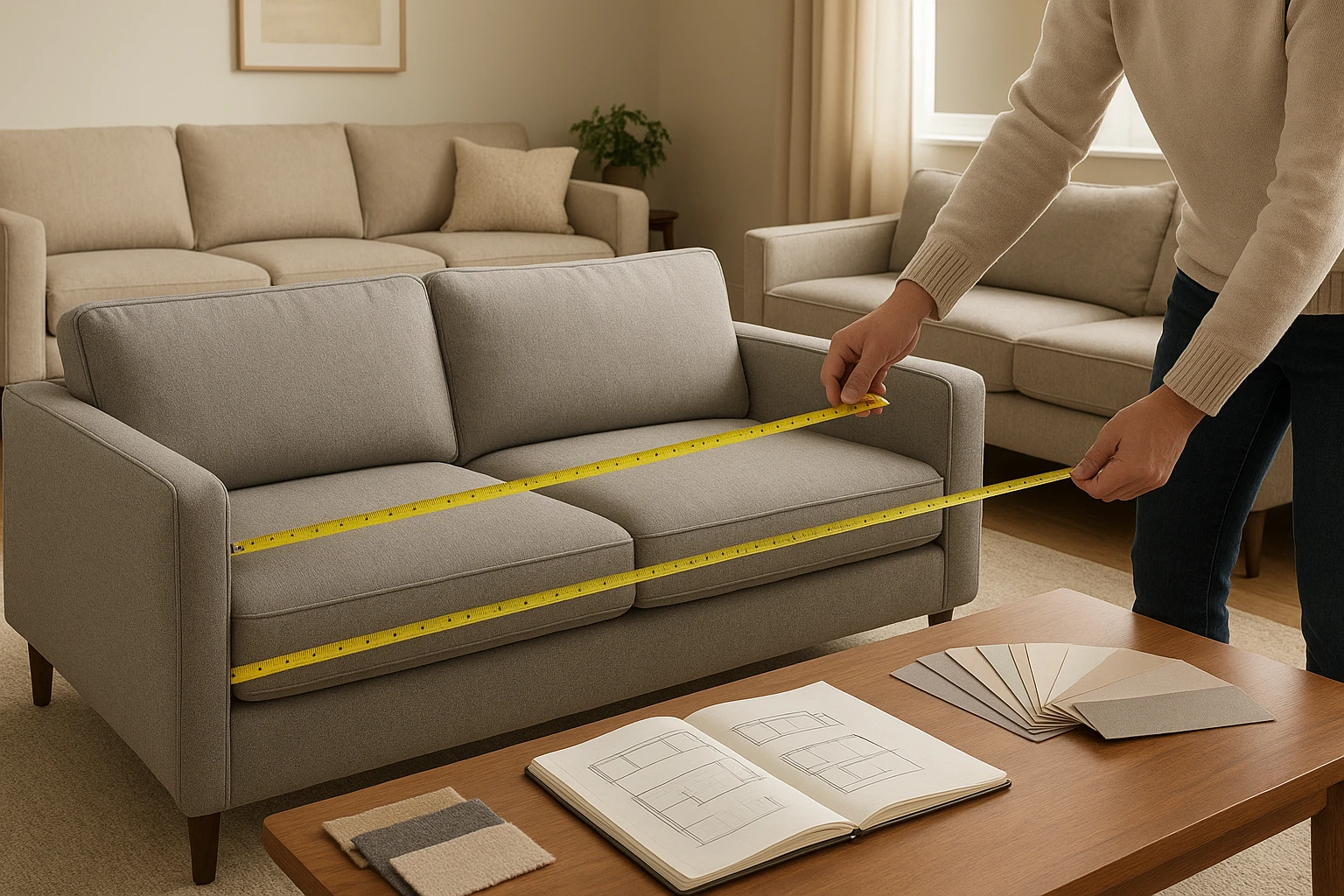
Step-by-step instructions for selecting the ideal sofa based on room dimensions, usage patterns, and design requirements.
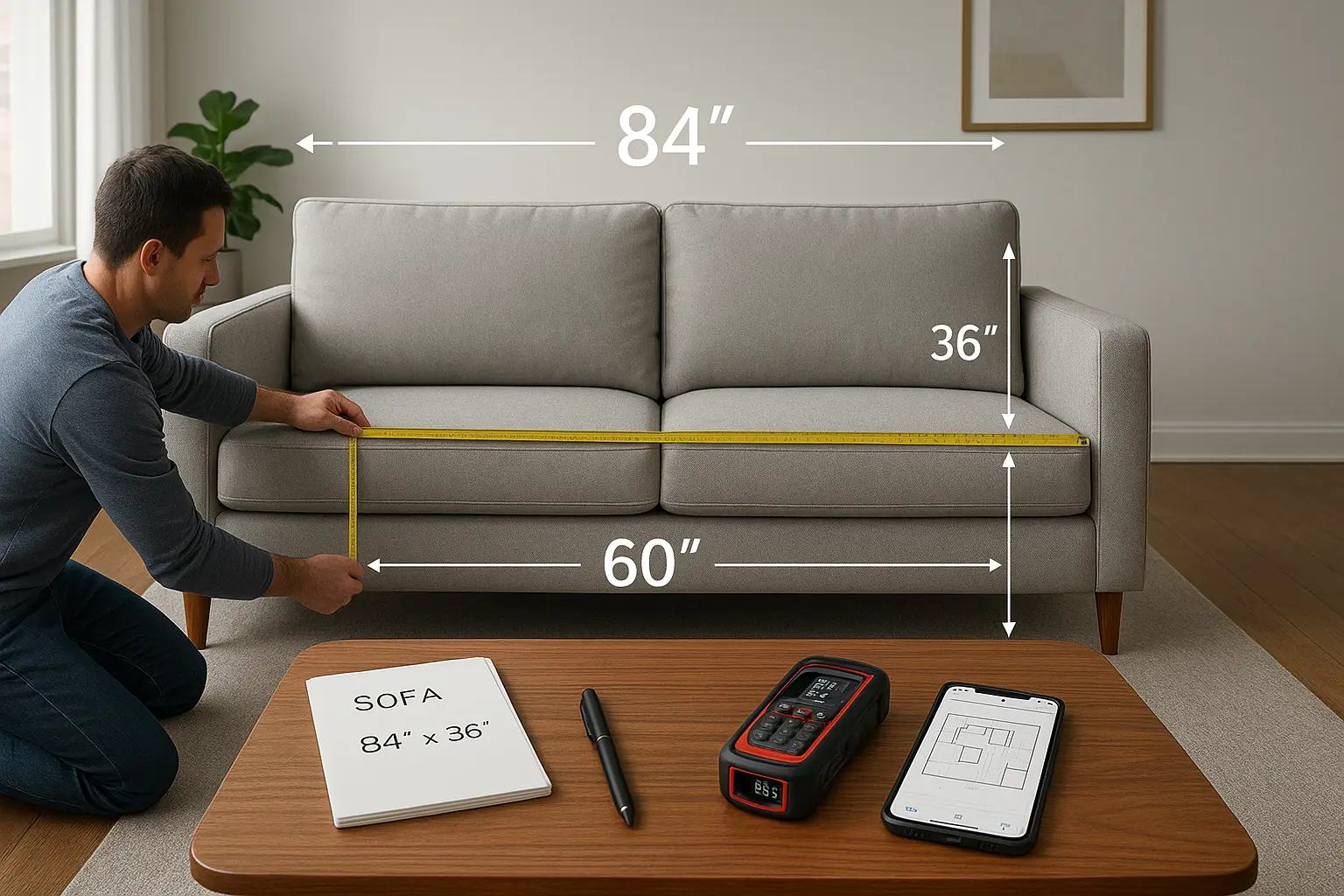
Learn proper measurement techniques and space planning for selecting sofa dimensions that fit your room perfectly.
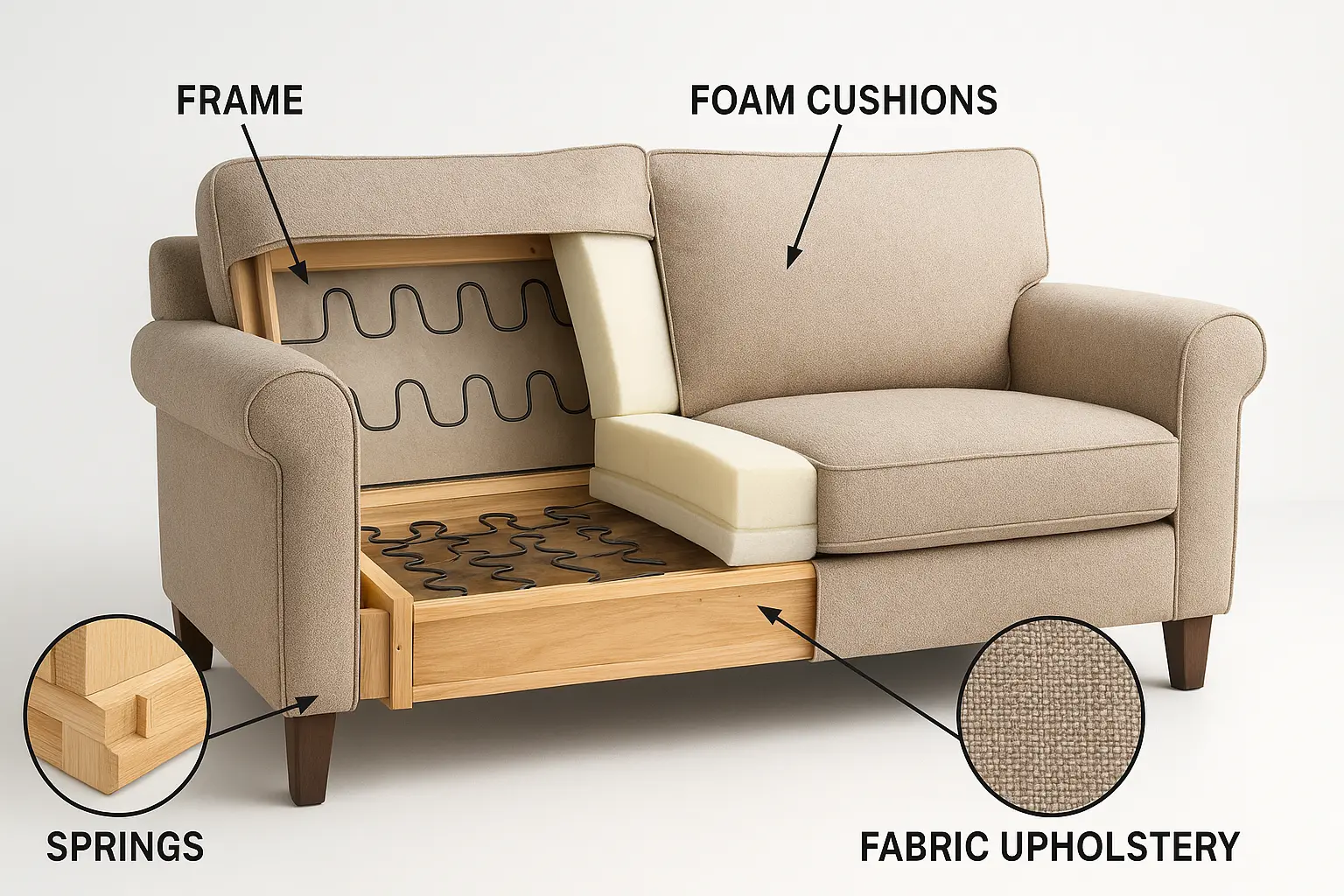
Understand sofa construction elements and how different materials and techniques affect comfort, durability, and quality.

Essential advice for purchasing sofas online, including measurement guidelines, fabric selection, and avoiding common errors.